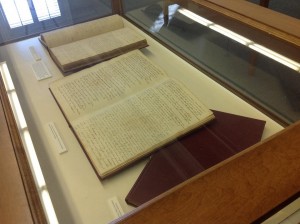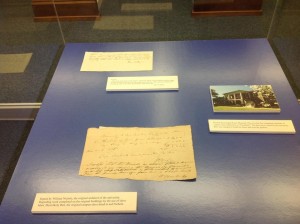By: Ben Flax, University of Alabama undergraduate student
Though the institution of slavery was integral to the European settlement of the Americas and to the economic development of British mainland colonies and the United States, by the early-nineteenth century most northern states had either abolished slavery or provided for its gradual elimination, and the Atlantic Slave Trade had been outlawed by federal legislation. As the cotton economy boomed in the Deep South, however, an internal slave trade took off in the United States and hundreds of thousands of men, women, and children were sold from older southern states to southwestern frontiers.
The idea for a state university for Alabama originated in 1818, a year prior to statehood, as part of a congressional plan to use land sales to help fund universities throughout the country. Tuscaloosa was selected as the site for the university in 1827, construction of the grounds began in 1829, and the University of Alabama formally opened in 1831. Given that the state of Alabama owed its existence primarily to the cotton boom and the rapid importation of slave labor that made that boom possible, it comes as no surprise that the University of Alabama would employ slave labor. It remains important nonetheless that we acknowledge how much enslaved laborers contributed to its building and development, and that those individuals sometimes suffered tremendously in the service of an institution that they would never be allowed to attend.
Even as we recognize former faculty, presidents, and others whose names adorn campus buildings, we ought to remember too those who put their blood and sweat into making the University of Alabama. This exhibit, then, is not intended to shame the University, but rather to respect and to name those who have been overlooked for far too long.
Editor’s Note: Ben Flax’s exhibition will be on display in the A.S. Williams III Americana Collection reading room on the third floor of Gorgas Library during the month of February.
Read more about the show in the Tuscaloosa News, Alabama.com, and on the blog Southern Jewish Life.


